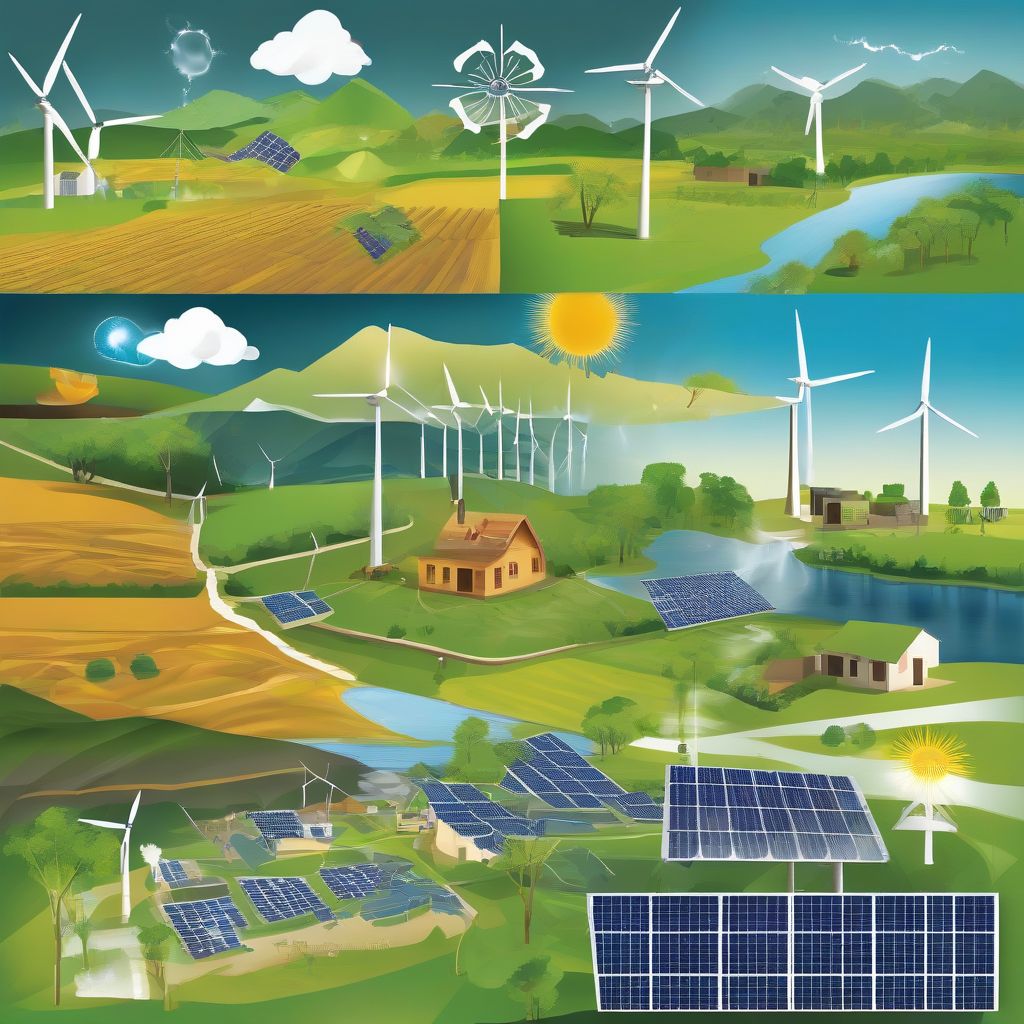Imagine a world where clean energy powers bustling cities and remote villages alike, a world where economic growth doesn’t come at the cost of environmental destruction. This dream is becoming a reality as developing countries increasingly embrace renewable energy sources. From solar panels illuminating African homes to wind turbines dotting the landscapes of Southeast Asia, a green energy revolution is underway, reshaping economies and empowering communities. But how exactly are these nations achieving this transformation, and what are the driving forces behind this shift?
The Rise of Renewables in the Developing World
For decades, developing nations often relied on fossil fuels for their energy needs, a path often dictated by economic constraints and limited access to alternative technologies. However, the landscape is changing dramatically. Falling costs of renewable energy technologies, growing concerns about climate change, and the desire for energy independence are propelling a significant shift towards cleaner sources. This transition isn’t merely a trend; it’s a strategic imperative for sustainable development.
Economic Advantages of Renewable Energy
One of the most compelling reasons for this embrace of renewables is the economic advantage they offer. Solar and wind power have become increasingly cost-competitive with fossil fuels, especially in regions with abundant sunshine and wind resources. This affordability makes renewable energy a viable option, even for nations with limited financial resources. Furthermore, the development of renewable energy projects creates jobs in manufacturing, installation, and maintenance, boosting local economies and fostering new skills.
Energy Independence and Security
Many developing countries face challenges related to energy security, relying on imports of fossil fuels, which can be subject to price volatility and geopolitical instability. Renewable energy offers a pathway to greater energy independence, allowing nations to generate their own power and reduce reliance on external sources. This autonomy strengthens national security and provides greater control over energy prices, shielding economies from external shocks.
Combating Climate Change
Developing countries are often disproportionately vulnerable to the impacts of climate change, facing increased risks of droughts, floods, and extreme weather events. The transition to renewable energy plays a crucial role in mitigating these risks by reducing greenhouse gas emissions and promoting a more sustainable development trajectory. This commitment to climate action not only protects vulnerable populations but also positions these nations as leaders in the global fight against climate change.
Technological Advancements and Accessibility
The rapid pace of technological advancements in renewable energy has made these technologies more efficient, reliable, and accessible to developing countries. Innovations in battery storage, smart grids, and decentralized energy systems are further enhancing the viability of renewables, enabling their integration into even remote and underserved communities.
Examples of Renewable Energy Success Stories
Several developing countries are showcasing the potential of renewable energy through inspiring success stories:
Kenya: Geothermal Powerhouse
Kenya has emerged as a leader in geothermal energy, harnessing the earth’s heat to generate a significant portion of its electricity. This clean and reliable energy source has reduced the country’s reliance on fossil fuels and provided affordable power to its citizens.
Bangladesh: Solar Home Systems
Bangladesh has implemented one of the world’s largest solar home system programs, bringing electricity to millions of rural households that previously lacked access to power. This initiative has improved living standards, empowered communities, and reduced reliance on kerosene lamps, contributing to both economic and environmental benefits.
Morocco: Concentrated Solar Power
Morocco has invested heavily in concentrated solar power (CSP) technology, building large-scale solar plants that generate electricity using mirrors to focus sunlight. These projects are contributing to Morocco’s ambitious renewable energy targets and positioning the country as a regional leader in solar energy.
 Renewable Energy in Developing Countries
Renewable Energy in Developing Countries
Challenges and Opportunities
While the progress is promising, challenges remain. Financing renewable energy projects, developing necessary infrastructure, and building technical capacity are crucial hurdles that need to be addressed. International cooperation, technology transfer, and capacity-building initiatives play a vital role in supporting developing countries in overcoming these obstacles.
The Future of Renewable Energy in Developing Countries
The future of renewable energy in developing countries is bright. As technology continues to advance and costs continue to decline, the adoption of clean energy sources is poised to accelerate further. This transition offers a unique opportunity for developing nations to leapfrog traditional fossil fuel-based development pathways and build sustainable, resilient, and prosperous economies powered by clean energy.
Conclusion
The embrace of renewable energy by developing countries is a testament to the transformative power of clean energy. This shift not only addresses pressing environmental challenges but also unlocks significant economic opportunities and enhances energy security. While challenges remain, the momentum is undeniable, and the future of energy in the developing world is increasingly powered by the sun, wind, and other renewable resources. We encourage you to share your thoughts and experiences with renewable energy in the comments below and join the conversation about building a sustainable future for all.



